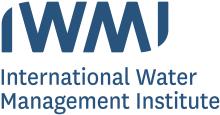Resource information
Policymakers and planners have tended to overlook artisanal fisheries?despite the fact that in rural areas, fisheries often contribute significantly to incomes and diets. An estimated 50 million people in developing countries derive income and food from inland fisheries. In locations as diverse as the Mekong, Amazon and Lake Chad basins, researchers found that rural households typically obtain 10 to 30 percent of their total income from inland fishing. And, particularly for poor households, fish is often the primary source of protein. Irrigation development and management can have direct and indirect impacts on fisheries. It can change flow patterns, size and connectivity of aquatic habitats, and water quality?affecting the productivity and diversity of fisheries. It can also change physical accessibility or rights of access to water bodies?affecting who is able to benefit from the resource. But, contrary to popular belief, fisheries can happily co-exist with irrigation systems - contributing to the overall productivity of systems and to livelihoods and food security of the surrounding communities. Recent research from Laos and Sri Lanka has shown that irrigation development can actually enhance fisheries production, with appropriate water management and policy support.




